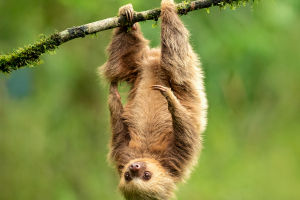Have you ever seen a bird with a fancy crown on its head, cinnamon-colored feathers, and black-and-white wings? That’s the Eurasian hoopoe — a bird we just can't ignore.
With its fun “oop-oop-oop” call and eye-catching look, it's easy to see why this bird grabs our attention. Found widely across Europe, Asia, and northern Africa, the hoopoe is one of those species that truly knows how to make an impression.
What Makes the Hoopoe So Unique?
This medium-sized bird, about 25–32 cm (9.8–12.6 inches) long, has a wingspan of 44–48 cm (17–19 inches). Its cinnamon-colored body, black-and-white zebra-striped wings, and tall crown feathers make it stand out in any crowd. Even its tail has a wide white stripe. But that’s not all — the hoopoe also has a long, curved beak that helps it probe into the soil for insects and larvae. What’s even cooler is that it can open its beak while it’s stuck into the ground. Not many birds can do that!
The Hoopoe’s Crown: A Stylish Touch
The hoopoe's tall, fan-like crown feathers give it a regal look — like it's always ready for a royal event. These feathers stand up when the bird is excited or trying to show off, especially during courtship. The name "hoopoe" actually comes from its call, but some say it may also link to the French word huppée, which means "crested."
Where Do They Live and Travel?
We can spot hoopoes in open areas like grasslands, farmlands, and even parks. They love places with bare ground or thin vegetation so they can find insects easily. Another important thing they need is a spot with holes or cavities to nest — such as trees, rock walls, or even man-made nest boxes. Their wide range means they live in Europe, Asia, and northern Africa. Some hoopoes even migrate to warmer regions like sub-Saharan Africa in winter, especially those from northern Europe and central Asia.
What Do They Sound Like?
Their call is as distinctive as their look — a repeated "oop-oop-oop" that’s soft but rhythmic. Sometimes, they use this call to mark territory or find a mate. During mating season, the female may make softer gasping sounds, especially when being fed by the male. When startled, hoopoes also produce low growls or hissing sounds to ward off threats.
Six Subspecies with Subtle Differences
Did you know there are six recognized subspecies of the hoopoe? Each one is slightly different in terms of size, feather color, and range. For example, the U. e. ceylonensis found in Sri Lanka is smaller and more reddish than the others, while the U. e. major in Egypt is larger with a longer beak.
What’s Their Flight Like?
When hoopoes fly, they almost look like giant butterflies. Their wide, rounded wings create a bouncy, undulating pattern as they flap. This makes their flight very noticeable — they don’t glide smoothly like hawks or soar high like swifts. They often fly low, close to the ground, especially when searching for food.
Fun Facts and Migration Highlights
European hoopoes often migrate south when winter comes, flying at night to avoid predators. They’ve even been spotted in unexpected places like Alaska and Ireland — though these are rare cases. Some of the largest recorded flocks in Ireland were seen as recently as 2015! Sadly, populations in northern Europe have declined since the 1980s, possibly due to changes in climate and habitat.
Let’s Protect and Celebrate This Beautiful Bird
Even though the hoopoe isn’t endangered, it's still important for us to protect its habitats. From nest boxes to pesticide-free gardens, we can help this bird thrive. It brings life and sound to many regions and has a special place in folklore and culture too.
We’re so glad to have taken this birdwatching journey with you, Lykkers! The hoopoe truly is a remarkable bird — from its elegant crown to its striking wings and quirky habit of foraging underground. There’s always something delightful to discover about it. Next time we spot one, we’ll recognize it right away. Have you seen a hoopoe in your area? Tell us your birdwatching stories — we’d love to hear from you!
Hoopoe facts: birds with stinkin' great accuracy | Animal Fact Files
Video by Animal Fact Files


